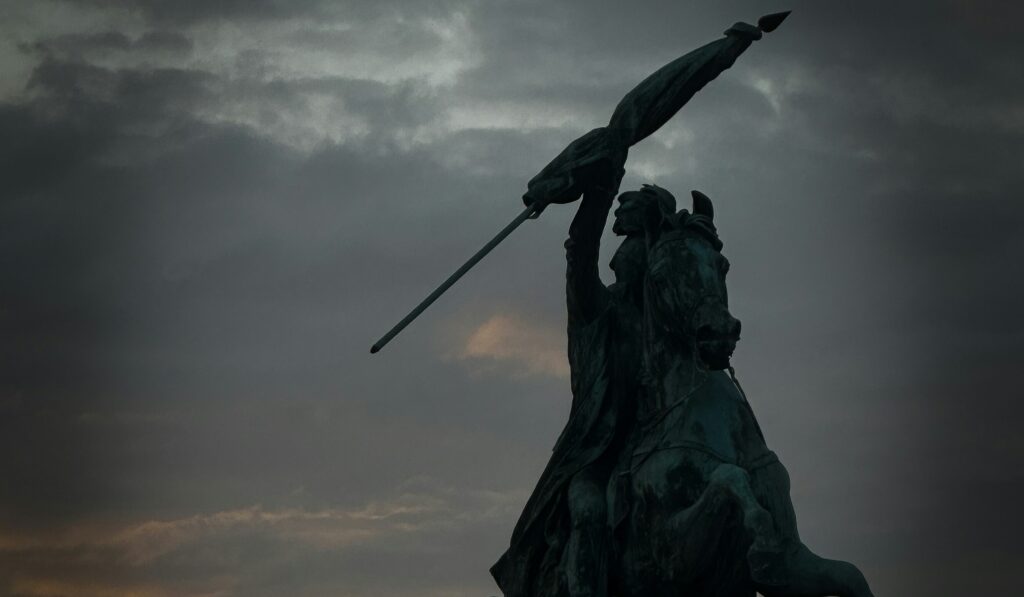On March 13, 1995, Braveheart, directed by and starring Mel Gibson, premiered in Los Angeles, becoming an instant classic. Set in 13th-century Scotland, the film tells the heroic and tragic story of William Wallace, a Scottish knight who leads a rebellion against English rule after the brutal murder of his wife. Braveheart is renowned for its sweeping battle sequences, stirring speeches, and its exploration of timeless themes like freedom, sacrifice, and nationalism, making it one of the most iconic historical dramas of the 1990s.
A Story of Rebellion and National Pride
At its core, Braveheart is a tale of resistance and the fight for freedom. After the murder of his beloved wife, Wallace (played by Mel Gibson) embarks on a mission to liberate Scotland from English tyranny. His passionate leadership and determination inspire ordinary Scots to rise against the powerful English army. The film explores Wallace’s transformation from a humble man seeking personal revenge into a national hero who sacrifices everything for the cause of freedom.
One of the film’s most powerful aspects is its portrayal of Wallace’s unwavering commitment to the Scottish people and their fight for independence. His iconic speech before the Battle of Stirling, where he proclaims, “They may take our lives, but they’ll never take our freedom!” became a defining moment in the film and a rallying cry for generations. The emotional depth of Wallace’s character, along with his courageous stand against a seemingly unbeatable foe, made him a symbol of resilience and hope for freedom fighters everywhere.
A Monumental Commercial and Critical Success
Braveheart was both a critical and commercial triumph. Grossing over $210 million worldwide, the film became one of the highest-grossing films of 1995. It received ten Academy Award nominations, including Best Picture and Best Director for Mel Gibson, and went on to win five Oscars, including the coveted Best Picture and Best Director awards. These accolades solidified Braveheart as a monumental achievement in cinema, marking Mel Gibson’s emergence as a leading director in Hollywood.
The film’s success also brought attention to its exceptional battle sequences. The dramatic and well-choreographed battles, such as the Battle of Stirling, became iconic in their own right, capturing the chaos and intensity of medieval warfare. The visual style of Braveheart, with its sweeping shots of the Scottish highlands and gritty battle scenes, made it one of the most memorable historical epics of its time.
Mel Gibson’s Career-Defining Performance
For Mel Gibson, Braveheart was a career-defining project. His portrayal of William Wallace earned him widespread recognition and praise for his acting, but his role as director was equally significant. Gibson’s vision for the film helped elevate Braveheart beyond just a historical drama, making it an emotionally charged and compelling narrative about the human cost of war and the pursuit of freedom.
Gibson’s direction ensured that the film captured both the grandeur of historical events and the intimate, personal moments of Wallace’s journey. His portrayal of Wallace, filled with passion and determination, resonated with audiences, turning the character into a symbol of courage and selflessness. Gibson’s success with Braveheart helped solidify his status as both an actor and a director, and his influence on the film industry grew substantially after the film’s release.
A Lasting Legacy in Historical Cinema
Braveheart also contributed to a resurgence of interest in historical epics. Its success inspired other filmmakers to explore historical subjects and figures, leading to a wave of films focused on epic battles, resistance movements, and the struggles for freedom. Movies like Gladiator (2000) and Troy (2004) followed in Braveheart’s wake, often drawing comparisons to Gibson’s groundbreaking film.
The impact of Braveheart extends beyond just its success at the box office and at the Academy Awards. The film’s themes of freedom, loyalty, and sacrifice have continued to resonate with audiences, inspiring countless viewers and even political movements over the years. Its lines, like the aforementioned “They may take our lives, but they’ll never take our freedom,” have entered the cultural lexicon and remain powerful symbols of resistance and defiance.
Behind the Scenes: A Monumental Production
Behind the scenes, Braveheart was a monumental undertaking. The film’s massive battle sequences, which required meticulous planning and execution, were shot with hundreds of extras and complex choreography to bring the medieval battles to life. Filming in the rugged landscapes of Scotland added to the authenticity and beauty of the film, with the dramatic vistas of the highlands providing a stunning backdrop for Wallace’s story.
Gibson’s dedication to historical accuracy, combined with his creative vision, helped make Braveheart a visually captivating and emotionally compelling film. The film’s production, which included challenging weather conditions and difficult terrain, became an impressive feat of filmmaking, setting a new standard for historical dramas.
A Timeless Epic of Courage and Sacrifice
Braveheart remains one of the most iconic films in cinematic history, a timeless epic about the price of freedom and the spirit of resistance. It continues to inspire viewers with its powerful themes, unforgettable performances, and epic battle scenes. Mel Gibson’s portrayal of William Wallace, along with his direction, helped create a film that will always be remembered for its emotional intensity and its celebration of the human will to fight for justice.
As Braveheart celebrates its place in film history, its legacy lives on, both as a monumental achievement in filmmaking and as a symbol of the enduring struggle for freedom and independence.


